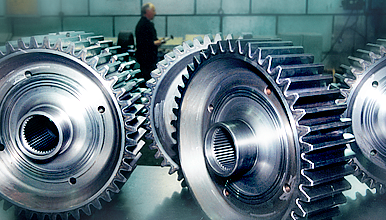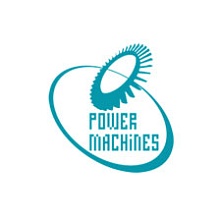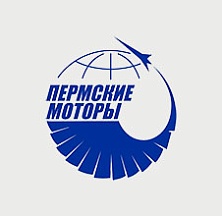Machinery

"Historically speaking, Interros works best with tangible assets: mining, manufacturing of turbines and transformers for electric power plants".
Vladimir Potanin,
RBK daily, 2013
1998 - 2007
Maximize
Minimize

Power Machineswww.power-m.ru/eng/
Interros launched Power Machines in 1998, when a team of managers headed by Evgeniy Yakovlev put forward a plan to restructure the power plant engineering industry. The Power Machines managing company was founded in November 2000. In 2003, thanks to a unified sales policy, the future consortium managed to increase its order book to $2.1 bln. That same year the company held an IPO for foreign and Russian portfolio investors. In 2005 Interros decided to begin divesting the company. By 2007 all Power Machines shares were sold to Siemens, RAO UES and Severstal.
More
“From day one we had to make decisions collegially. The birth of the consortium was taking place against the backdrop of a harsh dispute with the previous owners and mistrust on the part of the plants’ employees. Under the circumstances, it was paramount not to lose the key personnel employed at the plants. The managing company did not have a legal standing, and it was very difficult for us to make sure our decisions were executed. It was at that time that we decided to make all decisions collegially and foster effective horizontal linkages in the consortium”. (Interros Magazine, #2, 2003)
OJSC Power Machines
- One of the largest engineering and design centers in Russia, a leading Russian manufacturer and supplier of integrated solutions in power plant engineering.
- The consortium combined the resources of the Leningrad Metal Works (LMW), Elektrosila, the Turbine Blades Plant, Kaluga Turbine Works, Polzunov Generating Equipment Research, Design, and Manufacturing, Energomash Export and Power Machines Rheostat Plant.
- World’s fourth company by quantity of installed equipment.
- More than 300,000 MWt installed capacity in 57 countries: Russia and the CIS, India, Vietnam, China, Latin American countries, Africa and many others.
- Manufactures a full slate of world-class generating equipment.
- Enterprise system for continuous improvement of business processes.
History
1998
Yevgeniy Yakovlev’s executive team suggests that Interros invest in restructuring power plant engineering companies. Having lost traditional government support following privatization, these companies are finding themselves under ineffective management; the ensuing loss of market share is resulting a significant decrease in production. As of January 1, OJSC Elektrosila, the leading company in the industry, has accumulated $20 mln in debt, of which $1.6 mln is owed to the government. Bankruptcy proceedings have been initiated against Leningrad Metal Works, another industry leader.
2000
Together with a group of other Russian investors, Interros acquires a large stake in OJSC Elektrosila, and purchases OJSC ZTL and OJSC LMW. The Power Machines managing company is launched in November. The recovery of the acquired plants takes place under the Power Machines brand.
2002
The Joint Employee Conference adopts a declaration in March in support of merging the plants in the Consortium.
By then, between $30 and $40 mln in annual investment has been going to:
- Purchasing manufacturing equipment;
- Upgrading and retrofitting manufacturing equipment;
- Developing and upgrading plants’ testing facilities.
2003
In the second half of the year, shareholders approve the merger, and the executive team merges the companies into a single legal entity, OJSC Power Machines. The new brand symbolically represents the fact that the unified company shoulders responsibility in relation to its customers, all large energy-generating companies.
An effective investment strategy calls for the creation of a new large manufacturing company and equipment supplier in Russia for:
- Hydro, heat and power, and nuclear power stations;
- Energy transmission and distribution;
- Transportation and railroad equipment.
A unified sales policy allows the consortium to increase its order book to $2.1 bln, which is a year-on-year increase of 28%.
IPO:
An IPO is organized for Russian and Western portfolio investors, with a 17% stake placement bringing in more than $44 mln. Shares are purchased by ten European investment funds and other investors. Ordinary registered shares of Power Machines are included in Quotation List B on the Russian Stock Exchange in December.
Power Machines shareholders are looking for ways to develop the business. They identify two major action areas: attracting a large Russian company with state participation as a partner and captive customer, or breaking into the global market through partnership with a major foreign company able to invest in the consortium. Also under consideration is a merger with the United Machine building Plants, but this proposal is later shelved as unproductive.
2004
Power Machines shareholders consider a proposal to create a joint venture with Siemens, giving the latter a 71% stake in the Consortium. The assumption is that the German company will invest some $200 mln in Power Machines equipment upgrades and business development over the next 3-5 years. The Federal Antimonopoly Service of the Russian Federation does not approve the deal, under which Siemens would have received a controlling stake of voting shares in Power Machines.
2005 — 2006
The decision is made to partner with RAO UES, inviting Siemens as a minority shareholder.
The share sale timeline:
2005 — 22.43% of shares are sold to RAO UES
2006 — 20.61% of shares are sold to Siemens
The total deal amounts to $194 mln. RAO UES and Siemens own 25%+1 share each in Power Machines. Interros owns 30.4%.
2007
Interros sells its 30.4% of shares to Severstal, an Alexey Mordashov company. The deal amount is $470 mln.
Minimize
1996 - 2002
Maximize
Minimize

Perm Motorswww.ukpmk.ru/eng/
Interros acquired a stake in OJSC Perm Motors in 1996, and later brought in a management team to implement a turnaround program. The efforts bore fruit, and revenue grew by a factor of 7.5 over a nine-month period in 2000. In the early 2000s, the Russian government set a new strategy to bring large defense companies under government control for national security purposes. Interros undertook to restructure its assets before handing the company over to the government. First, a 37.2% stake in Perm Motors was transferred to Federal control. Some time later, in 2002, company shares owned by Interros were purchased by FGUP Gosinkor.
More
Revenue grew by a factor of 7.5 over 9 months in 2000
Company customers include Aeroflot, Rosaviakosmos and Gazprom
OJSC Perm Motors
- A leading company in aerospace, it manufactures conventional and jet propulsion engines, liquid propellant engines, helicopter main rotor transmissions and gearboxes, gas turbines and gas turbine power stations.
- The company products are widely used in aeronautics, aviation, heavy industry and power generation.
History
1996
Interros receives a 29% stake in OJSC Perm Motors from Microdin as debt repayment. Perm Motors is in dire economic straits with rapidly growing debt, no market for its products, and the economy in freefall.
1998
Interros becomes the largest shareholder in companies of the Perm engine conglomerate, and brings in a new managerial team to implement a turnaround program. PMZ, Perm Motor Plant, is created following the restructuring of JSC Perm Motors; one of its shareholders, Pratt & Whitney, an American company, owns 25%. Perm Motors, the parent company, is now a 49% owner of PMZ, while Interros owns a 26% stake. The thrust of the new strategy is to unlock the potential of Perm Motor Plant. The existence of Western shareholders means there is potential for access to foreign markets. Interros is also able to sell engines through leasing agreements, thus making the engines significantly more competitive.
2000
Interros is looking for new markets for Perm Motors’ products. Under a Master Agreement with Gazprom executed in the middle of the year, Perm Motors conglomerate begins to supply gas turbines to Gazprom.
2002
In the early 2000s, the Russian government adopted a new national strategy requiring all defense companies to be under government control for national security reasons. Interros is restructuring the assets to transfer the control of the company to the government. Rosaviakosmos and Interros sign an agreement specifying that 37.2% of Perm Motors shares be transferred to the Federal government. The government of Russia holds a meeting to consider nationalizing some parts of the holding. Interros finalizes restructuring of Perm Motors and issues a statement that the company is now a non-core portfolio investment. Interros sells its shares in the companies of the conglomerate (25% of PMZ and 25% of OAO Aviadvigatel) to FGUP Gosinkor for more than $50 mln.
Minimize